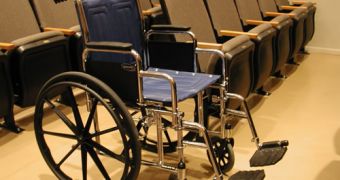Novel research fields seek to address the needs of people who are confined to a wheelchair for the remainder of their life, from robotic arms to aid the paraplegic, to robotic feet meant to help individuals who are paralyzed from the waist down finally get back on their feet.
A former Army Rangers elite member who lost his ability to walk after a parachuting accidents is behind one of the most promising artificial feet models. Working out in the basement of a 99-cent store, Monty Reed has developed an artificial set of feet, which is able to lift people from their wheelchair, drawing his inspiration from the Starship Trooper book.
“And I thought, ‘You know, if I could build a lightweight version of that, it might lift me out of the wheelchair,” he said of his source of inspiration. “A lot of people 20 years ago, when I was talking about robot suits, they thought I must have hit my head when I broke my back. It needed to be simple to operate, so that anybody who can drive a powered wheelchair will be able to drive one of these,” he added, saying that he wanted to offer other wheelchair users the possibilities he himself might have needed, since life had given him a second chance (he recuperated from the crash).
The way his artificial feet look like is not straight out of a sci-fi book, but they get the job done very well. Before a patient steps into them, their natural movements are recorded by a computer, and then the artificial, man-made “muscles” that power the robotic platform are imprinted with the parameters. This ensures that each of the platforms is perfectly adapted to its wearer.
“That makes perfect sense. I think we’re on the right track because we have a unique solution to the problem,” University of Washington Medical School associate professor Dr. Steven Stiens pointed out. He is part of a 40-member team that gathers in Monty's basement lab to conduct research on the new product. They hope to have a hospital version ready really soon, and a widely available one by no later than 2015.

 14 DAY TRIAL //
14 DAY TRIAL //